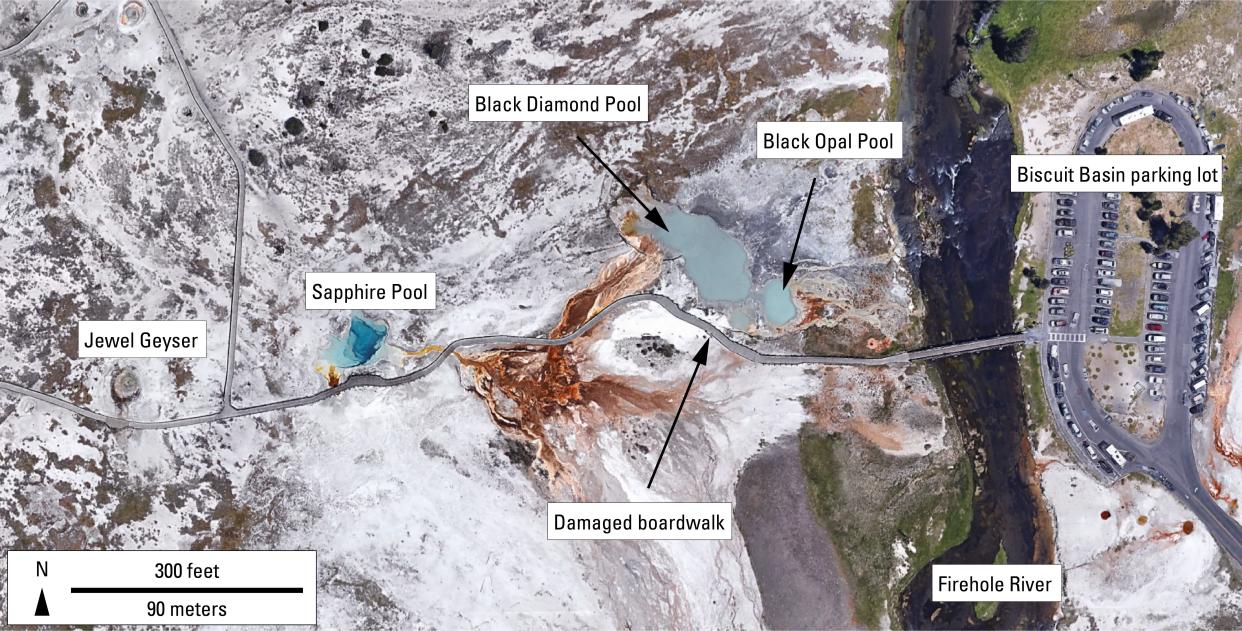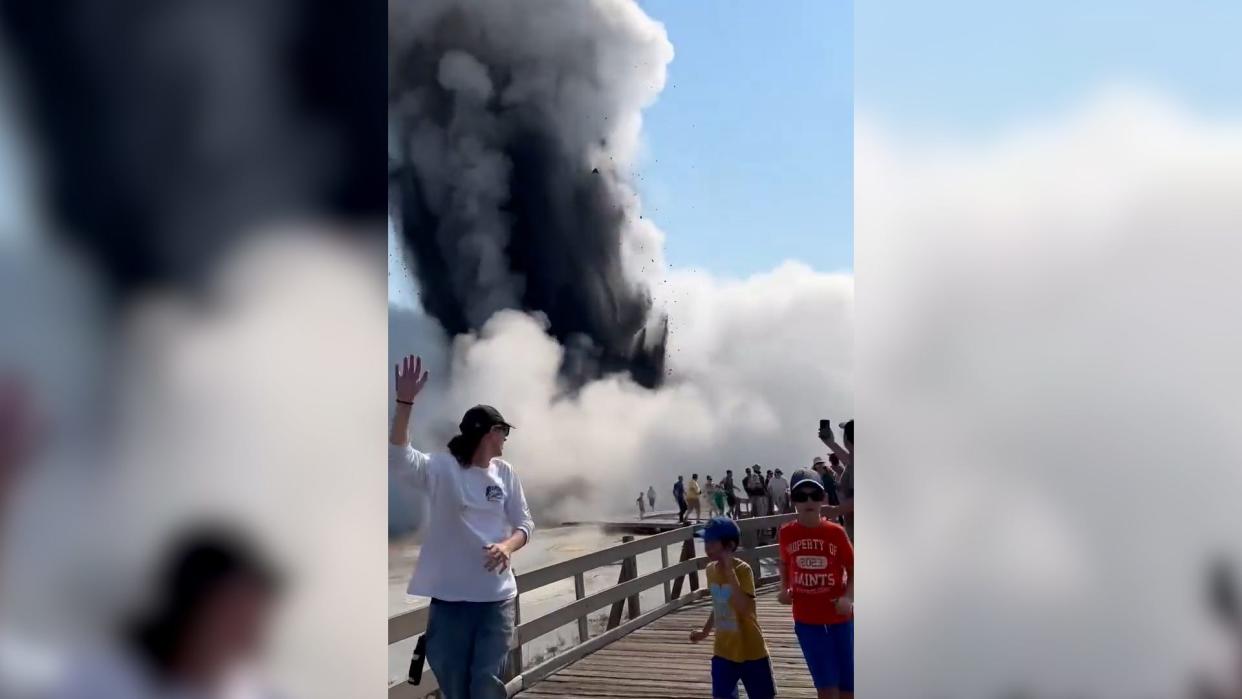Yellowstone shuts down Biscuit Basin for summer after hydrothermal explosion damaged boardwalk
Yellowstone National Park has closed off a thermal area for the rest of the season after an explosion on Tuesday sent visitors scattering as they tried to escape the steam, rock and mud that was sent flying.
The National Park Service announced Wednesday the parking lot and boardwalks at Biscuit Basin would remain closed for the rest of the summer after the hydrothermal explosion, which took place around 10 a.m. local time Tuesday.
Dramatic video captured the moment when the explosion sent a dark cloud into the air as guests ran for safety.
No one was injured in the blast, but the explosion destroyed the boardwalk guests can walk on.

Is the explosion a bad sign?
Explosions like the one occurring Tuesday are "one of the most important and least understood geologic hazards," Lisa Morgan, an emeritus U.S. Geological Survey research geologist, wrote for the Yellowstone Caldera Chronicles, a Yellowstone Volcano Observatory publication.
While unexpected geological activity at the park can seem like a harbinger of doom, the explosion at the Biscuit Basin thermal area is not a sign of an impending volcanic eruption, as previously reported by USA TODAY via the U.S. Geological Survey. (That's especially good because Yellowstone is home to a supervolcano.)

What is a hydrothermal explosion?
Hydrothermal explosions occur when hot water in a volcano system turns into steam in a confined area, Morgan wrote. A sudden drop in pressure causes rapid expansion of the high-temperature fluids and a crater-forming eruption.
The explosions are "violent and dramatic events" that can reach heights of over a mile and spew debris as far as two and-a-half miles away, according to the observatory.
Are they dangerous? Has anyone ever been killed?
Most hydrothermal explosions are small and go unobserved, according to Michael Poland, the scientist-in-charge at the observatory. No one has been killed or injured by a hydrothermal explosion, although between "blowing out rock, mud and boiling water, it's not something you want to be close to," he said.
"It was small compared to what Yellowstone is capable of," USGS said on X, formerly known as Twitter. "That's not to say it was not dramatic or very hazardous − obviously it was."
Does this mean Yellowstone's supervolcano is going to erupt?
Hydrothermal explosions are not an indicator a volcanic eruption is brewing, according to USGS. There is a supervolcano roughly the size of Rhode Island buried deep beneath Yellowstone that has produced some of the largest eruptions in the world, and Poland previously told USA TODAY it will erupt again.
But the underground system will likely show decades of warning signs before it blows, including multiple, large earthquakes, a change in the chemicals in the hot springs, and an increase in heat. The ground also would slowly shift by tens of feet and release gasses, Poland said.
And an eruption isn't likely to happen for thousands of years. When it does, it will probably resemble Hawaii's Kilauea volcano eruption in 2018, rather than a mass extinction event. But if a supereruption were to occur, millions would die, ash would blanket much of the country, water would be contaminated, the country’s heartland would be unfarmable for years and the climate would change for years or even decades.
“Humanity would survive, but it would not be a fun time,” Poland said.
Contributing: Olivia Munson, Anthony Robledo, Michael Loria, and Katharine Lackey, USA TODAY
This article originally appeared on USA TODAY: Yellowstone's Biscuit Basin closed for summer after explosion
